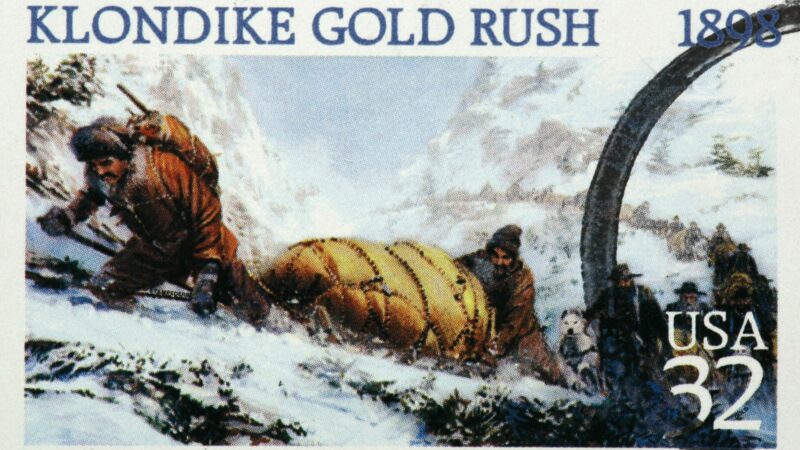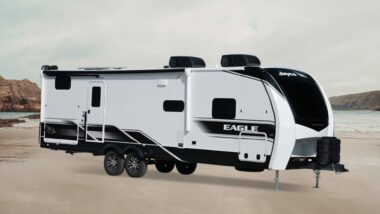Table of Contents Show
Over 125 years ago, more than 100,000 brave people set off, hoping to strike it rich. Until we experienced it for ourselves, we didn’t know much about this moment in history. So, what was the Klondike Gold Rush?
Today, we’ll dive into this incredible adventure that caused a massive influx of people to the region. We’ll dig in and see what nuggets we can uncover.
Grab your gold pan, and let’s get started!
What Was The Klondike Gold Rush?
The Klondike Gold Rush took place from 1896 to 1899 in Northwest Canada. George Carmack discovered the first evidence in Bonanza Creek, a tributary of the Klondike River. It wasn’t long before word began to spread, and tens of thousands of hopeful prospectors converged on the area. They came so fast that many referred to them as “stampeders.”
However, this was a challenging journey to make. Prospectors faced some of the most challenging terrain in the world. They had to conquer steep mountain passes and fierce weather conditions with limited food and supplies. Unfortunately, most of those who set out to find gold were unsuccessful. While they may have found some, it was far from what they had hoped.
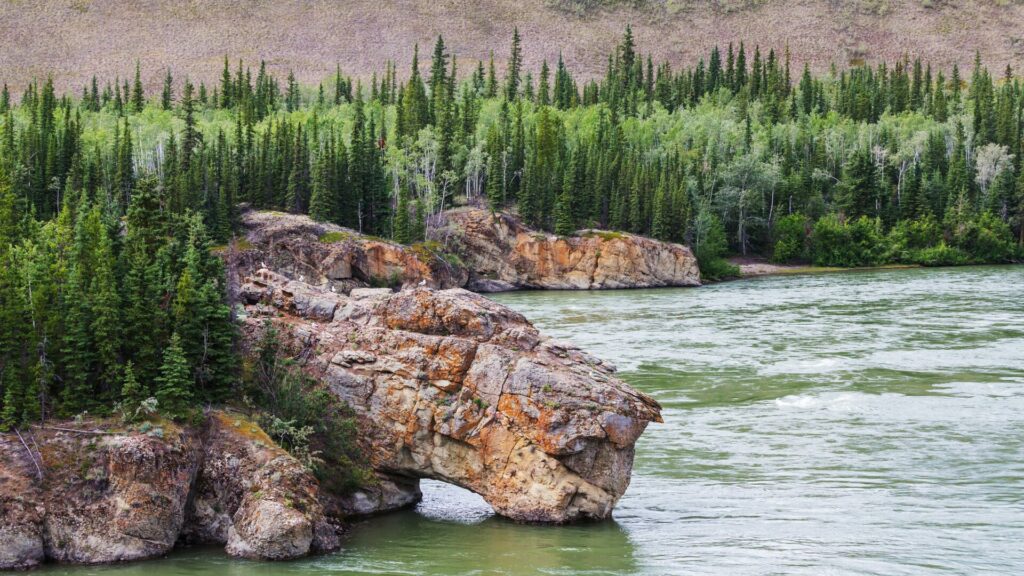
Why Was the Klondike Gold Rush Important?
While the Klondike Gold Rush may not have produced riches for most people, it was still a significant historical event. The Klondike Gold Rush massively stimulated the economy throughout the Yukon region. In addition, American cities like Seattle benefited as it became a hub for supplies and transportation.
Additionally, it was responsible for a tremendous migration in population. Prospectors and other adventurers from all over the world flocked to the area from the United States, Europe, Asia, and other parts of Canada. When the dust finally settled, many settled throughout the region.
While the Klondike Gold Rush positively impacted the economy and infrastructure, there were also consequences. The biggest consequence was the environment. Mining activities significantly changed the landscape of the region. The completely raw and untouched land was forever damaged. Gold and other minerals were stripped from the land to put money in the pockets of investors.
What Major Events Happened During the Klondike Gold Rush?
Gold was first discovered in August 1896 in Bonanza Creek. By 1897, the stampede to Klondike had already started. Hopeful prospectors began navigating the Chilkoot and White Pass Trails. During the year, Dawson City quickly grew and served as a base for many. As word spread, it captured the attention and imaginations of people.
As you might expect, with such an interest in gold mining, the technology around it grew. It saw the introduction of hydraulic mining and dredges to help extract gold on the river beds throughout Klondike. However, things quickly ended in the late 1890s once large operations staked the most lucrative gold claims.
While it may have only lasted a few years, transportation infrastructures like the White Pass and Yukon Route Railroad play a crucial role today. The Yukon Territory and the Pacific Northwest both richly benefited from the event. Unfortunately, the environmental consequences will forever scar this beautiful and majestic land.
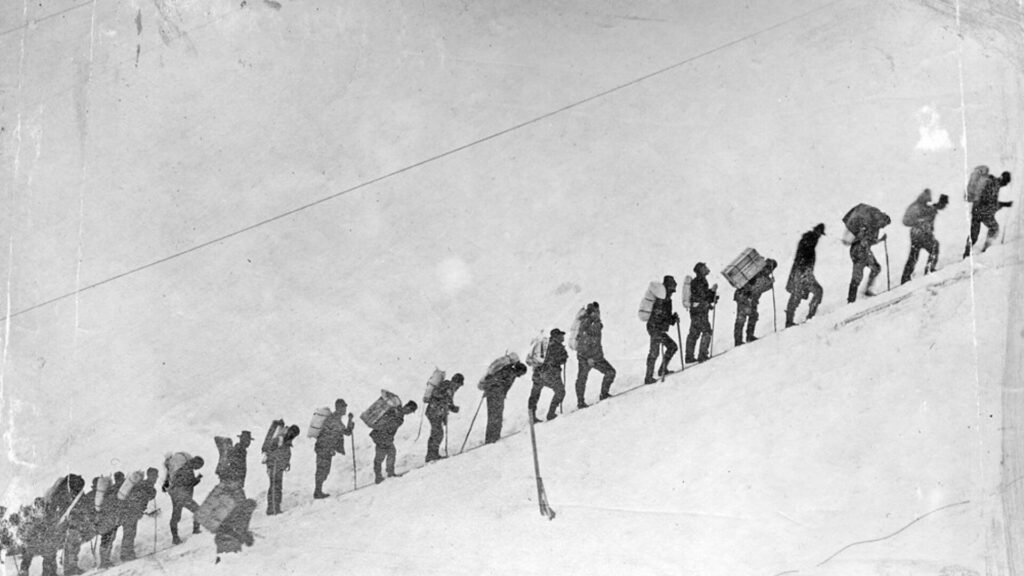
Can You Still Find Gold in the Klondike?
While the Klondike Gold Rush ended more than a century ago, it is still possible to find gold. You don’t need complex or sophisticated equipment to start finding gold, either. You can search rivers and streams throughout the region with minimal equipment and investment. However, you may need permits or permission. Failure to acquire them could land you in hot water.
While it may not be as lucrative as before, commercial mining operations still exist throughout the region. In addition, there are many tourist expeditions you can sign up for and get to experience it. However, while you may find some gold, manage your expectations. The Klondike Gold Rush devastated many, and we don’t want you to be its next victim.
Most people find a few bucks worth of gold during these adventures. If you’re lucky, you may find enough to break even with the cost of the expedition. Like the many people who have gone to Las Vegas hoping to strike it rich, the odds aren’t in your favor.
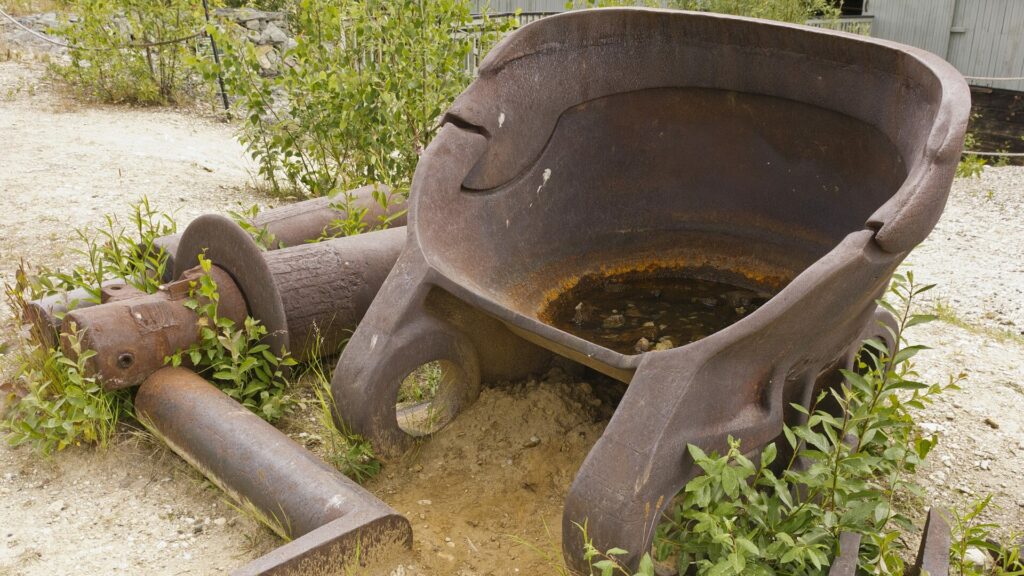
Tips for Finding Gold in Klondike
If you plan to find gold in Klondike, there are some things you can do to improve your chances. Let’s look at several tips we’ve learned for finding gold in the Klondike and other areas.
Research the Area
If you want to find gold, the first thing you need to do is research the area. Knowing where gold was previously found can be incredibly helpful. Like we’ve all heard a thousand times when we’re looking for something we’ve lost, where did you last see it? That’s the first place you should look.
However, you’ll have to learn more than just about the area’s history. This kind of adventure will also require you to dive into its geology. Knowing about rock formations and geological processes can be helpful. They could help you discover the next big gold rush in the Yukon territory.
Know the Regulations
In addition to researching the history and geology, it’s a good idea to brush up on the regulations. There are specific rules and regulations that everyone must follow. Doing so helps ensure sustainable mining practices throughout the region.
You must be familiar with the many regulations and permit requirements. These requirements often spell out when, where, and how to prospect. You can face serious legal consequences and fines if you don’t follow them.
Choose the Right Spot
While choosing the right spot can feel like selecting the right slot machine, it’s very different. At least with prospecting, you can do some research. If an area has a history of producing gold, there’s a chance you could find some. However, much like a slot machine, success is never guaranteed. You could spend days or weeks searching and come up empty.
Use the Right Equipment
Like many things, having the right equipment can be incredibly helpful. However, if you’re just starting, you don’t have to go out and spend hundreds or thousands of dollars on equipment. The first thing you need to get is a high-quality gold pan. This can help you separate the gold particles from the sediment.
Additionally, a sieve can be very helpful. This helps eliminate larger rocks and debris. This can make your prospecting easier and more efficient. It can allow you to quickly and easily remove the items that are not gold.
As you gain experience, you can purchase more sophisticated equipment. We recommend investing only a little money in your equipment. If you do, it could take considerable time to recoup your investment. You may even get discouraged and throw in the towel before turning a profit.
Pro Tip: Check out this article on Our Favorite Gold Panning Kit before making any purchases!
Grow Your Gold Panning Skills
Like any new hobby, you need to grow your panning skills. Practice in a more controlled environment instead of in a river or stream. It’s best to practice with material you know contains a certain amount of gold. This will help you when you head out into the wild and search for it on your own.
We recommend buying a bag or two of gold panning pay dirt. These bags often contain trace amounts of gold for you to find. Don’t plan on striking it rich. Instead, see it as an opportunity to sort the dirt from the gold. This way, when you head to a river or stream, you’ve developed your technique and have a good idea of what you’re doing.
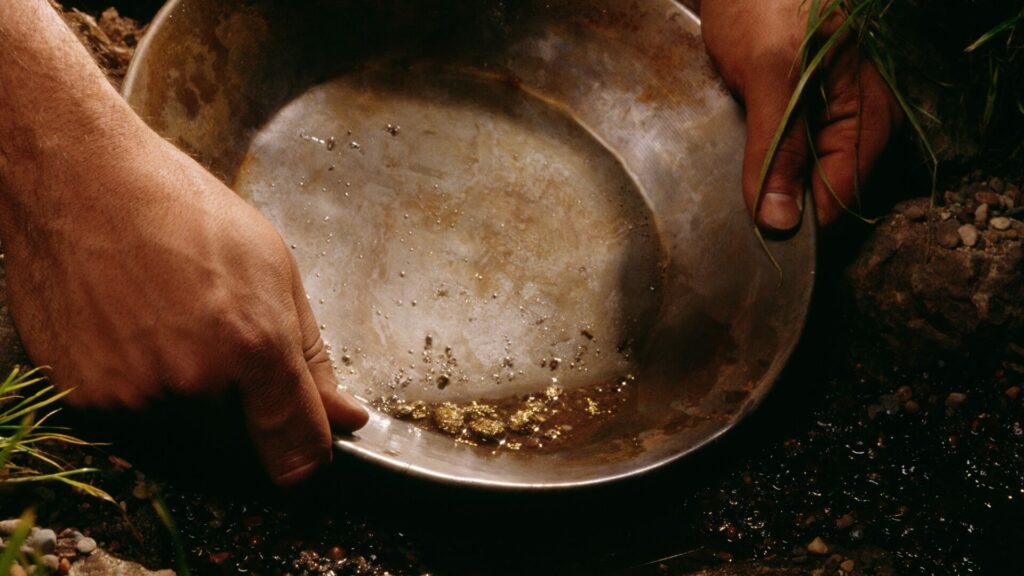
Be Patient
Unfortunately, panning for gold is anything but a get-rich-quick opportunity for most prospectors. They’ll spend hours sifting through gravel and sediment or wading through rivers and streams to find a small amount of gold. Just like fishing, you may go out time after time and not catch a single thing. Success likely won’t come instantly and will take time.
As your patience grows, so will your skills. You’ll find yourself making fewer mistakes or experiencing challenges along the way. Whether you’re panning for gold in Klondike or any other location, pack your patience for each trip.
Document Your Findings
Documenting your findings can be helpful, even if it’s not gold. Get a journal or a notebook to keep track of anything you find, even if it’s not gold. Make notes of where you’re searching, the date, time, and weather conditions. Documenting your tools and techniques during each trip is also a good idea.
It can also be helpful to take photographs and videos. These can be helpful reminders when you go through droughts to find gold. In addition, you can share your hobby with others in online forums, social media groups, or other local miners. The more details you can keep, the more you can see patterns in what works and doesn’t work.
Respect the Environment
Whether you search Klondike or your backyard, you must respect the environment. No matter how big of a nugget you find, it’s not worth destroying the environment. You should always practice responsible mining techniques. We disapprove of using chemicals or other methods that pollute waterways and disrupt the ecosystem.
During your adventures, you’ll likely have trash and other waste. Make sure you dispose of it properly when in nature. We hate seeing debris left behind while out exploring. Even if you discover trash that’s not yours, be the bigger person and pick it up. We all need to be responsible for taking care of our beautiful planet.
Remembering the Klondike Gold Rush
The Klondike Gold Rush was a pivotal event in the history of North America. While it may have resulted in much heartbreak and disappointment, it did have some positive impacts. Neither you nor us may ever strike it rich while panning for gold, but it’s an opportunity to spend time in nature. The Klondike Gold Rush reveals to us the incredible perseverance of humans.




